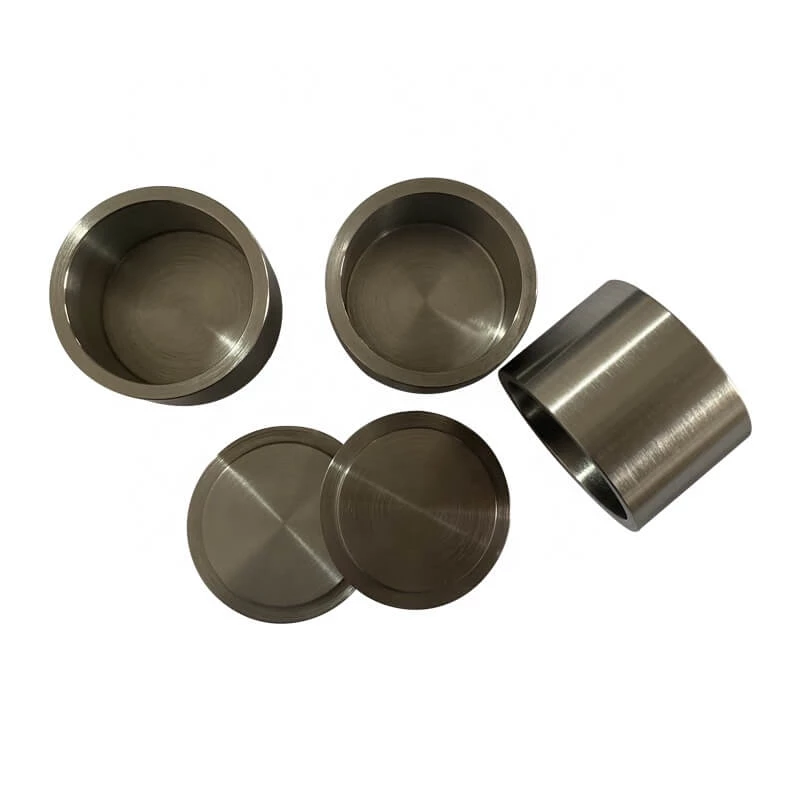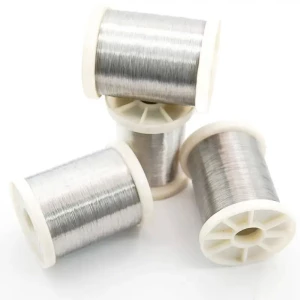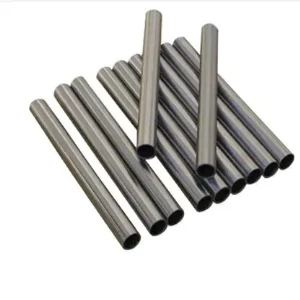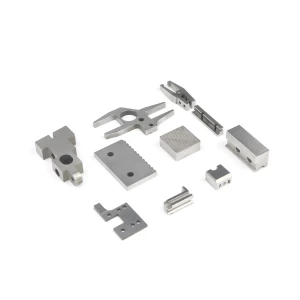Niobium is a gray white metal, melting point 2468 ℃, boiling point 4742 ℃, density 8.57 g / cm3. Niobium is stable in air at room temperature, and it is not completely oxidized at red heat in oxygen. Niobium is directly combined with sulfur, nitrogen and carbon at high temperature and can form alloy with titanium, zirconium, hafnium and tungsten. It is insoluble in aqua regia, but soluble in hydrofluoric acid. Brand: ro4200-1, ro4210-2 Purity: ≥ 99.95% Types: Machining crucible, welding crucible, riveting crucible, stamping crucible
In the field of materials science, there is a tool called "niobium crucible", which is widely used in high-temperature melts and chemical experiments due to its unique properties. Today, we'll take a closer look at this amazing tool and explore its features, uses, and the science behind it.
First, let’s understand what a niobium crucible is. Niobium is a silver-white metal with a very high melting point and good corrosion resistance. As a result, crucibles made of niobium can withstand extremely high temperatures without melting, while also exhibiting excellent stability to a variety of chemical reactions. This property makes niobium crucibles ideal for many high-temperature melting experiments and chemical reactions.
So, what is the main use of Niobium crucibles? Because niobium crucibles are resistant to high temperatures and corrosion, they are widely used in the preparation of high-purity metals, ceramics, glass and other materials. During these experiments, the niobium crucible not only withstands high temperatures but also prevents impurities from mixing in, thus ensuring the purity of the final product. In addition, due to its excellent chemical stability, niobium crucibles are often used to carry out various chemical reactions.
So, why does niobium crucible have such performance? This starts with the physical and chemical properties of niobium. First, niobium has a high melting point of 2468°C, which makes it stable at high temperatures. Secondly, niobium has a strong affinity with non-metallic elements such as oxygen, nitrogen, and carbon, so it can form a stable oxide film to protect itself from corrosion. Finally, the thermal expansion coefficient of niobium is small, resulting in small volume changes when the temperature changes, thus ensuring stability during the experiment.
Of course, although niobium crucibles have many advantages, they also have some limitations. For example, niobium may be limited in cost-sensitive applications due to its relatively high price. In addition, although niobium has good corrosion resistance, its corrosion resistance may be reduced under extreme conditions, such as extremely high or low temperatures, or in strong acid or alkaline environments.
Overall, niobium crucibles are important tools in materials science and play an important role in high-temperature melting and chemical reactions due to their unique physical and chemical properties. Whether in scientific research laboratories or in industrial production, we can find it. Although it has some limitations, its advantages make it an indispensable tool in many applications.
Usage: niobium is used as crucible container. Because of its high temperature resistance, strong deformation resistance and corrosion resistance, it is generally used in rare earth metal smelting, induction furnace heating body, special glass melting, material tray of electrolytic capacitor anode during high temperature sintering, chemical corrosion resistance container, splash and evaporation container, etc
We have more categories for you. lf you can't find the products you want above,just fill in the form and tell us whatproducts you want to import from China.
















